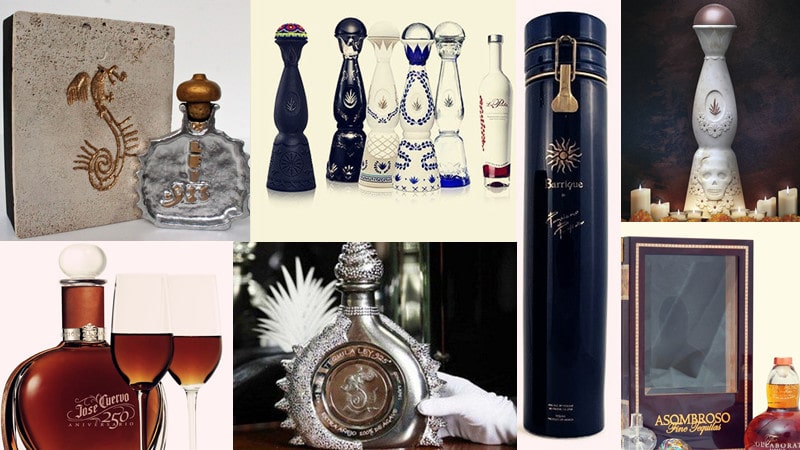Tequila has lent its unique flavor to some of the most famous cocktails, such as The Margarita, Tequila Sunrise, The Tequini, and its dirtier counterpart. Premium tequila, however, can encapsulate your senses with its agave flavor and those semi-sweet, earthy elements without relying on other ingredients.
That’s what the most expensive tequila brands out there aim to achieve — and here’s which ones are worth trying out right now.
Tequila 101: Origin, History, and Classification

As soon as you turn 21, the world of delicious tequila is finally accessible to you. But tequila, as the world knows it today, has come a long way since its origin.
One of the earliest versions of the drink is pulque, which is still a traditional alcoholic beverage in Mexico. It is made from the maguey plant, or agave americana, and traditionally has a milky color and a sour taste.
There is a crucial difference in the production, however. Unlike tequila, which involves cooking and crushing the succulent agave cores to release pulp, pulque doesn’t require any cooking. Producers cut out a cavity in the plant’s core to release the sap (aguamiel), which is then fermented.
Tequila also has links to the Spanish invasion of the Aztec civilization and its liquor-loving conquistadors. Once they ran out of their brandy supplies, they supposedly started using agave and mud to make their liquor — a variety that resembles today’s mezcals.
Mass-production of tequila started in the 1600s, with the first distillery opening in modern-day Jalisco, where you can find the city of Tequila too. Jalisco is one of the five territories where modern tequila production takes place. The other four are Tamaulipas, Guanajuato, Nayarit, and Michoacán.
-
Commercialization of Tequila
When it comes to commercial production, the Cuervo family got a huge advantage in 1758 when it got a land grant. The family quickly set up a farm where they would cultivate the blue agave plant. Later on, they also got a permit to produce tequila commercially, courtesy of King Carlos IV.
The US got its first taste of tequila thanks to Don Cenobio Sauza, the founder of the distillery that grew into the Sauza Tequila Import Company. He was the first to export this drink to the US, thus marking the beginning of the tequila export market that would slowly take the drink’s popularity to an international level.
-
Is Mezcal the Same as Tequila?
Though both tequila and mezcal, another distilled alcoholic beverage, come from agave plants, their differences clearly set them apart.
For one, you have to use blue agave plants to craft tequila. Mezcal allows for more variety, though, as you can opt for 30+ different varieties of agave (espadin is a favorite) to make the drink.
In essence, tequila is a type of mezcal, but you cannot say that all mezcals are tequila. By law, tequila must contain at least 51% of blue agave distillate.
Another difference is their alcohol content. Mezcals can have a higher ABV (alcohol by volume) — up to 55%. Tequila, however, usually dances around 40% ABV.
That said, mezcals don’t have to be stronger than tequila in terms of alcohol. The taste, though, can be more intense than what you’d expect from a typical tequila.
Besides that, you don’t even make the two drinks the same way. To get tequila, you have to first steam agave inside industrial ovens and then distill it a few times in copper pots.
In contrast, artisans usually cook mezcal in pits in the ground and distill it in clay pots. In order to ensure it has that well-known smoky flavor, they typically fill the pits with charcoal and wood.
-
Types of Tequila
The first thing you need to know about the best tequilas out there is that they’re typically made from 100% blue agave. If they’re not, they’re mixto tequilas. This variety contains at least 51% blue agave. The remainder comprises non-agave sugars, like fructose or glucose.
The easiest way to classify tequila is to consider the aging process (or lack of it). In that regard, you can differentiate between five types of tequila:
1. Tequila Blanco
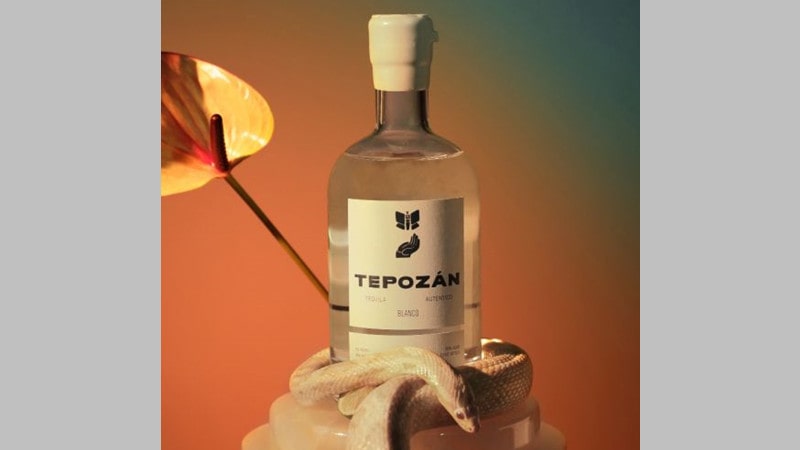
Image source: Pinterest
Also called tequila plata (or silver tequila), this variety has been aged for only a couple of months or not at all. If necessary, though, producers can keep it in neutral oak barrels or stainless steel vats for up to two months.
Tequila blanco offers the unadulterated expression of the agave flavor because it hasn’t been so influenced by wood due to aging. Thus, its flavor profile is usually bolder and a bit hotter, making it perfect for cocktails.
2. Tequila Joven

Image source: Pinterest
You’d be hard-pressed to find tequila joven in your local liquor store, as it’s not as popular as it was in the 1990s. Still, if you do, you’d appreciate its flavor profile, resulting from mixing tequila blanco with aged varieties.
Though some also call it gold tequila, the gold variety is usually just a mix of white tequila and colorants, flavorings, sugars, oak extracts, and sometimes even glycerin. It would be fairer to call that type a mixto then.
3. Tequila Reposado

Image source: Pinterest
Reposado, or rested/aged tequila, is blanco tequila kept in French or American oak barrels from anywhere between two months and a year. During that time, the drink rests and develops a unique flavor profile. At the same time, it changes color, going from clear to a golden hue due to wood tannins.
Tequila reposado doesn’t lose the younger notes of the agave juice; instead, it develops a rounder flavor over time. There are some hints of honey and caramel in it, as well as chilly, vanilla, chocolate, and cinnamon.
Distillers eager to introduce even more flavors so that every sip packs quite a punch may opt to keep their tequila in used barrels, such as those that previously housed wine, Cognac, or bourbon.
4. Tequila Añejo

Image source: Pinterest
If you decide to leave your tequila a bit longer in the barrels (one to three years), its flavor profile changes further, and you get tequila añejo or vintage tequila.
The more time tequila spends in wooden barrels, the more the wood influences its flavors and color. Therefore, extra-aged tequila is typically well balanced, offering both hints of agave and oak flavors. Its previously acidic tones become more caramelized and sugary, making the drink taste of vanilla or butterscotch. Similarly, the color becomes richer as time goes by.
5. Tequila Extra Añejo
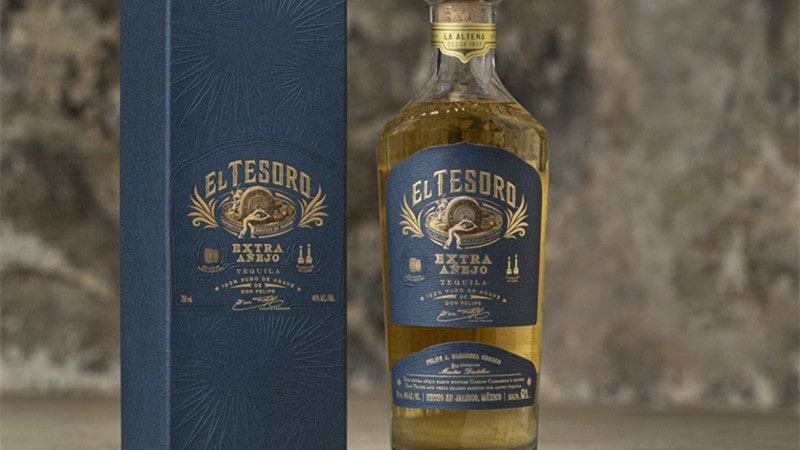
Image source: Pinterest
Finally, there’s ultra-aged tequila, which producers have to keep in the barrels for more than three years to earn this title. The category itself didn’t exist until 2006. Since then, this type of tequila has become famous as one of the more prestigious varieties.
Due to the aging process, this type boasts a superbly rich taste and aroma that’s perfect for sipping — it’s fairly uncommon to use it in cocktails. In fact, its smokiness and caramel flavor can easily rival some of the best scotch varieties out there.
What Makes a Good Tequila?

-
Production
Though determining a good tequila may come down to taste, aficionados worldwide know that there are some clear rules regarding the drink’s quality.
For one, good tequila is always pure, or rather, 100% blue agave. If it’s not, it is not premium tequila but full of additives that tarnish the truly enjoyable agave flavor.
Tequila is made from agave tequilana, a type of large succulent that resembles aloe vera due to its long and spiky leaves. The specific cultivar necessary for tequila production is Weber Azul.
Producers first wait until the plants reach maturity (7+ years) and then use only the cores to make tequila. They bake those cores, crush them to release the sap, and then combine the juice with yeast so that it can ferment.
After fermentation, tequila has to be distilled, usually twice (any more than that, and you risk losing flavor). Once that’s done, the drink is either bottled up immediately or left to age.
-
Alcohol Level and Origin
Another consideration is the alcohol level. While you’d think that a higher alcohol content would make tequila taste worse, it is usually a sign of better quality.
Typically, tequilas have an alcohol content of 38 to 40%, but the concentration can go up to 55%. Besides that, only Mexican tequila is real tequila, and you should be able to verify that on the label.
Another telltale sign you’ve got the real deal is CRT. If you find these three letters on the label, it means that the tequila has been regulated by the Consejo Regulador del Tequila, an organization that certifies tequila production.
The NOM number is also important, as it denotes the bottle’s authenticity. With this number, you can even learn more about a specific tequila producer.
-
Reliable Quality
Finally, what makes a bottle of tequila truly great is that it’s always the same — no matter when you buy it. The brand behind it should be able to produce the same high-quality spirit every year, and you should get the same flavor and aroma with each sip.
10 Expensive Tequila Brands You Should Check Out
1. Tequila Ley .925 Diamante
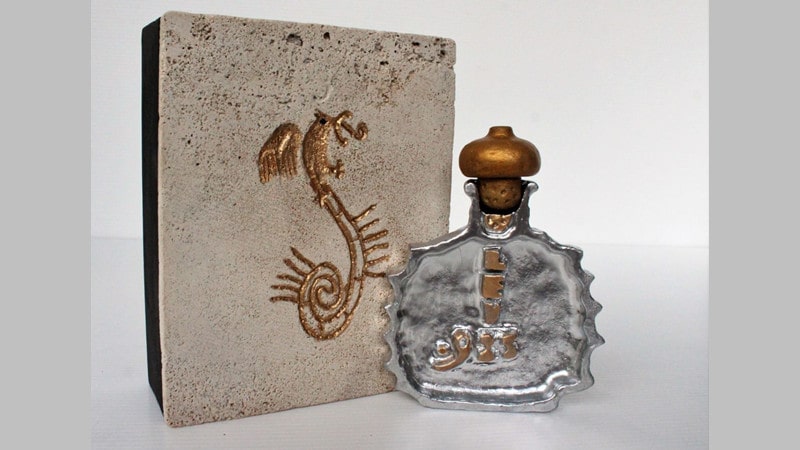
Image source: Pinterest
Price: $3.5 million
At a glance, you’d think Tequila Ley Diamante is a piece of art. It simply oozes luxury due to the two kilos of platinum and a whopping 4,100 white diamonds used to create the bottle.
Incredibly enough, the bottle took ten months to make, with 17 artisans working meticulously on it.
But the contents of the bottle aren’t any less impressive. The tequila is Ley .925. Premium Extra Añejo. Apart from using the best-quality agave plants for the distillate, the brand also kept the tequila in barrels for seven years to ensure the final result is a delectable, rich liquor perfect for sipping.
2. Tequila Ley .925 Ultra-Premium

Image source: Pinterest
Price: up to $225,000
The second most expensive tequila is the passion project of the same brand that created Diamante, only this time, the price is a bit more reasonable.
Now pretty much world-famous, Ultra-Premium got into the Guinness Book of Records as the most expensive tequila ever sold. The lucky buyer was a Mexican collector who got their hands on it back in 2006 for a cool $225,000.
Aged for six years, the premium-quality tequila found in these bottles comes from 100% blue agave. Though a satisfying drink, no doubt, it’s the bottles that attract collectors the most.
The brand made only 33 Platinum and White Gold bottles and engraved each one with capitals of 33 countries. Those bottles have an asking price of $225,000.
Platinum and Yellow Gold bottles, on the other hand, cost only $150,000. They were also engraved, but with states that form the Mexican Republic.
Finally, there are also Yellow Gold and Silver bottles, which have a gold emblem in the center and go for $25,000.
3. Clase Azul 15th Anniversary Edition

Image source: Pinterest
Price: $30,000
Clase Azul has come a long way ever since its establishment in 1997. The brand’s tequila has been served at some of the most exclusive events, so naturally, it was only a matter of time before the brand came out with a superbly exclusive bottle — worth a mere $30,000.
Served in ceramic pepper grinder bottles embellished with 24k gold and amber, the 15 bottles made to commemorate the brand’s 15th anniversary are truly works of art.
The contents are nothing less than indulgent too. The tequila is a blend of 11- and 15-year reserve tequilas, which together comprise an incredibly delicate and luxurious drink.
4. Clase Azul Tequila Día de Muertos

Image source: Pinterest
Price: $2,990
The Day of the Dead is a major Mexican holiday during which friends and family members pray and remember the loved ones who have passed away. It is not, however, a solemn holiday but rather one that celebrates those who have left us.
With that in mind, Clase Azul Tequila Día de Muertos is a wonderful commemorative tequila and the first in the brand’s Día de Muertos series. It perfectly complements the offerings made during Día de Muertos, as its aroma contains notes of almonds, agave syrup, and candied orange peels.
The flavor is nothing short of outstanding, too, offering hints of orange blossom, clove, coffee, and citrus. The unique flavor profile is the result of blending an añejo tequila that was aged for 14 months in American whiskey casks and tequila that was kept in first-use American oak casks.
Naturally, the decanter depicts the famous symbols of The Day of the Dead, such as La Calavera Catrina, an elegantly dressed skeleton. Mexican artisans also helped embellish the bottles by adding handcrafted gold-plated metal ornaments.
5. José Cuervo 250 Aniversario

Image source: Pinterest
Price: $2,350.99
José Cuervo doesn’t cease to amaze tequila aficionados even after spending 250 years making the drink. Its 250 Aniversario bottle is a testament to the brand’s commitment to quality and exclusivity.
The tequila in this special edition is 100% blue agave and ultra-aged for a richer flavor and aroma. The agave plants for this tequila were, in fact, harvested in maturity from a single crop field. The tequila also had to be aged in French and American oak barrels, as well as in sherry barrels brought over from Spain.
The end result is a creamy drink with some incredible hints of butterscotch, vanilla, and chocolate. As for the smell, you may notice notes of sherry, citrus, and smoke.
6. AsomBroso Barrel 3 “The Collaboration”

Image source: thewhiskyworld.com
Price: $2,095
This is a double-barrel-rested tequila that remained in Silver Oak Cellars American casks for 12 years. The finished product has notes of both fine wine and agave, with hints of caramel, cherry, butterscotch, and sweet cream. Surprisingly enough, it differs from the brand’s previous releases by featuring notes of wild apple and blackberry too.
And if that’s not enough to convince you, consider the superbly luxurious packaging. The tequila comes in a hand-made crystal decanter that could easily make the bottle a fantastic collectible. The exclusivity is even more evident when you consider the brand produced only 150 bottles!
7. Barrique de Ponciano Porfidio
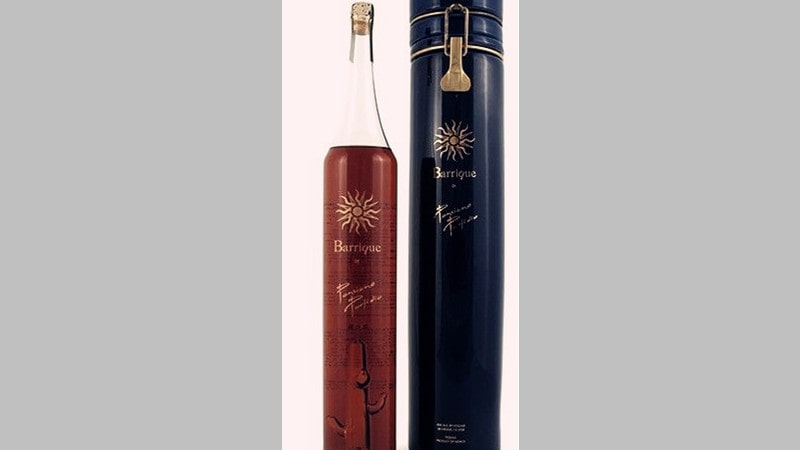
Image source: Pinterest
Price: $2,000
Though far more affordable than some other entries on this list, Barrique de Ponciano Porfidio Tequila is nonetheless very exclusive since the brand releases only 2,000 bottles every year.
The handcrafted glass bottle is embellished with 21k gold, while the tequila is distilled and then redistilled to achieve a smooth, rich flavor. Before bottling the amber-like drink, the drink remained in French oak barrels for a decade to develop a unique flavor profile.
8. AsomBroso Del Porto Extra Añejo

Image source: Pinterest
Price: $1,995
There are a few good reasons this tequila would set you back almost $2,000. First, it is a double-barrel tequila that has rested for 12+ years in French oak and port wine casts. On top of that, it is a first of its kind and comes in an exquisite crystal decanter courtesy of Luciano Gambaro, an Italian artist.
The decanter is actually a replica of one discovered in an 18th-century European castle. Its sole reproduction took over two years, so it’s definitely a labor of love.
The tequila itself is smooth, with an oaky, semi-sweet aroma, floral undertones, and notes of toffee and port.
9. 1800® Colección Tequila

Image source: Pinterest
Price: $2,000
The most expensive tequila brands in the world maintain the exclusivity of their products by producing small batches. The same applies to 1800® Colección Tequila, which is one of the rarest in the world as there are only 100 bottles available!
The bottle itself tells a wonderful story. Its design combines love and myths, as it depicts a mermaid and her soulmate, a Mexican warrior, fighting for their true love.
The tequila, on the other hand, is the result of 50 years of expert craftsmanship. Like every high-quality tequila, its production starts with matured blue agave, which goes into stone ovens and cooks/steams. To ensure the drink is as smooth and rich in flavor as possible, the liquid is then distilled twice in copper pot stills and left to age for more than three years in charred French oak barrels.
10. Clase Azul Tequila Ultra

Image source: Pinterest
Price: $1,700
Finally, there’s the Tequila Ultra, which Clase Azul calls the crown jewel of the brand’s portfolio. As a dream come true for collectors all around the world, both the tequila and the decanter are, in this case, proof of exquisite Mexican craftsmanship.
It took the brand 14 years to create this tequila, and the process included aging it for five years. During the aging period, the producer kept it in two different types of casks: first in American whiskey and then in Spanish sherry casks.
The aroma is rather impressive, offering hints of sherry, cherries, apricots, and dried plums. Meanwhile, the flavor revolves around hints of dried plums, vanilla, crystallized ginger, crème caramel, and cinnamon.
As always, Clase Azul made sure to make the decanter as enchanting as the drink itself. This time, the brand used three precious metals for embellishment: 24k gold, silver, and platinum.
Mexican artisans also hand-painted the bottles so that they all feature a platinum-feather design. Interestingly enough, you can only see this type of metallic paint after the bottles have been fired up, proving yet again that a bottle of premium-quality tequila can actually be a true artistic masterpiece.

